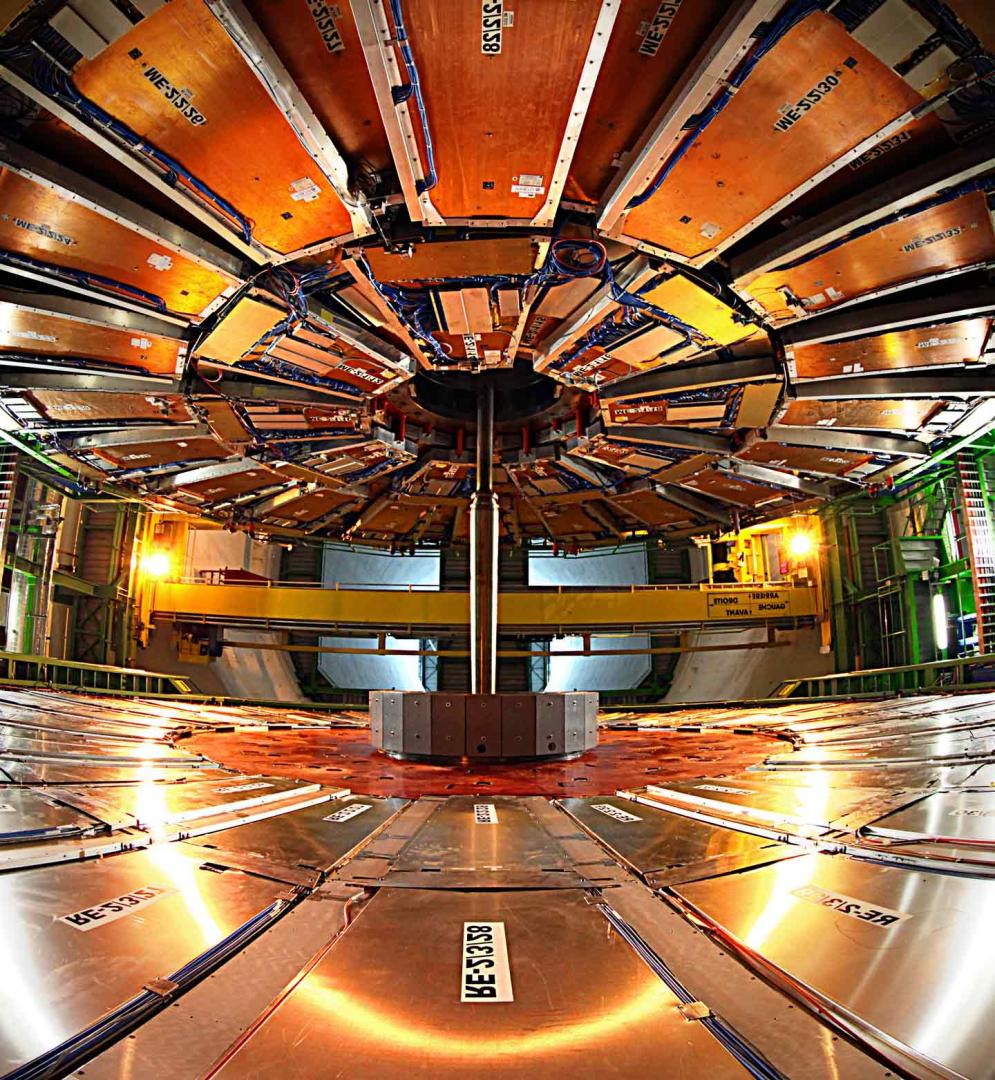As CERN goes into its first long shutdown, it's time open up the CMS detector and get inside for maintenance and repairs. Engineers and technicians started opening the CMS detector on 7 March, but moving the parts of this 14,000-tonne behemoth is no easy feat.
CMS has a barrel section made of five rings, with two endcaps each comprising three discs and, outside those discs, two 250-tonne forward hadron calorimeters (HF) [see diagram]. To open CMS, the HFs, which surround the beam pipe, are opened and lowered to the cavern floor, where they are floated on air pads into storage alcoves. Then the endcap discs are moved away from the barrel, starting with one end and then going to the other.
"It took a couple of weeks of work to move the forward calorimeters and the first three discs apart," says detector physicist David Barney of CMS. "Then we went to the other end and started to move the other three discs."
Barney has worked on one part of CMS, the electromagnetic calorimeter (ECAL) for nearly 20 years. The ECAL is mainly made of lead tungstate crystals that detect photons and electrons. But in the endcaps, an extra detector called the preshower sits in front of the crystals. The preshower is an array of silicon sensors that measure precisely the positions of incident high-energy electrons and photons.
Specifically, it can distinguish an incoming photon from a pi-zero decay. Pi-zero particles decay at the collision point into two photons that are so closely spaced that they can appear to be a single photon.
"When the preshower is there, you should hopefully be able to tell the difference between a single photon and a pair of closely spaced photons," says Barney. "But there's this relatively big area of the preshower that doesn't work because of a flaky connector that has been there for two years! We can only fix it when we open the detector," he sighs.
Currently the barrel and endcaps of the ECAL have about 99% of their channels working, while the preshower has 97%. "You might think – 'well that's not bad after three years of operation,'" says Barney, "but everything could be improved. We know that a couple of connectors are bad, we know where they are, and we can get to them once CMS is open," he says.
The CMS team is looking forward to getting inside the detector for maintenance. "I'll get that flaky connector," says Barney. "It's been on my mind for two years!"

